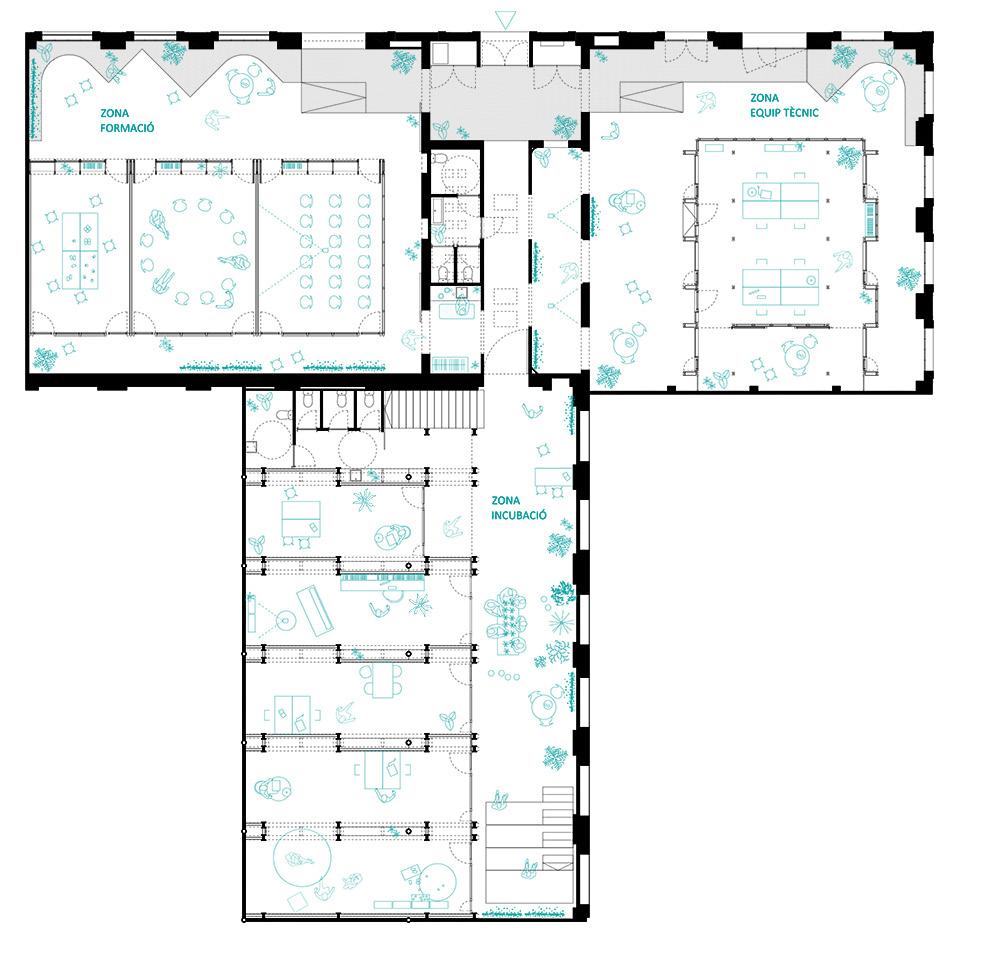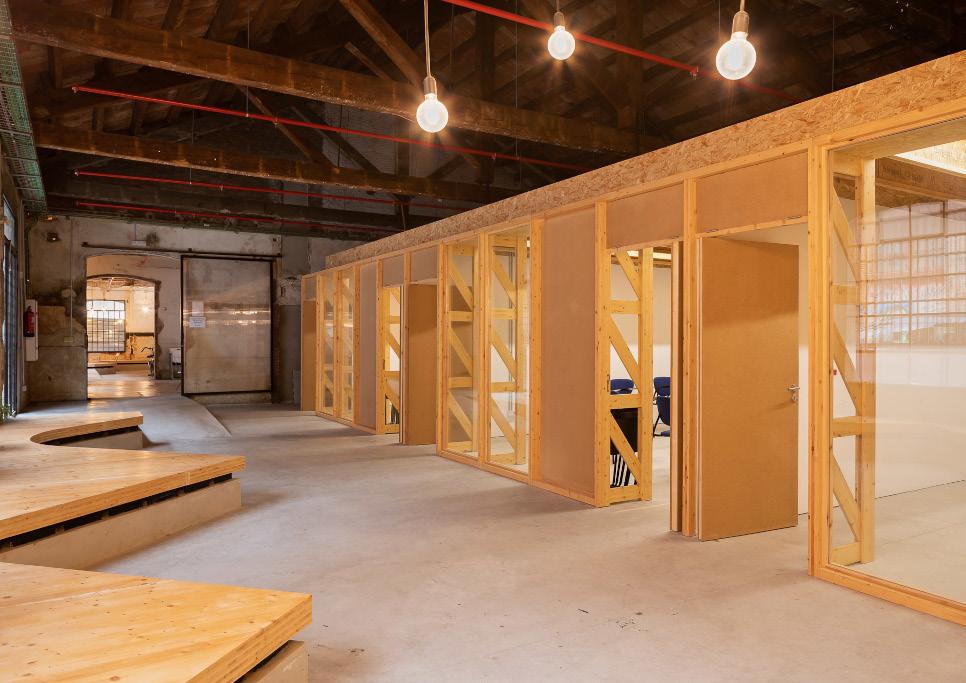
2 minute read
0. during La Borda Reinventinghousingthroughcommons
As perceived, Lacol was there throughout that period, being part of the communityled urban projects in the site of Can Batlló. That relation allowed them to explore and understand another perspective of their position as architects and the processes of participation, and more specifically, on how the collective works and how processes of commons can be redefined, constrained and affected by that. They go even further by mentioning that the design of those spaces there is no meaning without the people. There is no real collective space without the participation of the actual community in the making process. Moreover, the participation of Lacol in the act of resistance defined by the existing local community, allowed them to build trust with the community, and gave space to the certainty of bottom-up and non-institutionalized transformation. In that way, safe space was created through practices of commons among the different actors, affecting progressively the relation with the state, the city and the neighborhood. After some years of active community-led occupation and the forms of resistance from the citizens of those areas, Can Batlló started to become source: Cantos, A. (n.d.) COÒPOLIS BCN. FASE 0 , image, Lacol, Available at: https://www. lacol.coop/projectes/coopolisbcn-fase-0/ (Accessed: 26 January 2023). source: Lacol (n.d.) COÒPOLIS BCN. FASE 0, drawing, Lacol, Available at: https://www.lacol. coop/projectes/coopolis-bcnfase-0/ (Accessed: 26 January 2023). piece of the neighborhood, proving to the state that they should own the post-industrial site. To legitimize the site.
The picture indicates the common space -during the rehabilitation of the Block 4- as a linear spatial configuration which will connect in a later phase the various services of social economy.
Advertisement

The drawing made by Lacol shows the proposal of the full rehabilitation of the Block 4 by local services and events for the local community.
16. Lacol (2016) Coòpolis Bcn. Fase 0. Available at: https:// www.lacol.coop/projectes/ coopolis-bcn-fase-0/ (Accessed: 18 January 2023).
17. Lacol (2016) Dinamització del Pla Municipal. Available at: https://www.lacol.coop/ projectes/dinamitzacio-plamunicipal/ (Accessed: 18 January 2023).
18. Lacol (2015) PLA PEL DRET A L’HABITATGE DE BARCELONA 2016-2025.Available at: https:// www.lacol.coop/projectes/ pla-pel-dret-lhabitatgebarcelona-2016-2025/ (Accessed: 18 January 2023).
During the rehabilitation process of the Block 11 and 4, Lacol participated in an extensive serious of community-oriented workshops17 in 2016 in the district of Sants with main objective to revitalize the general metropolitan plan of 1976 proposed by the state of that time. From a community-oriented and top-bottom plan to a bottomup and community-led approach! One of the main results of those workshops that the majority agreed on –and that Lacol was align with- was the right to housing for the citizens of Barcelona, and therefore of the proletariat community of La Bordeta. That finally led not only to the coordination of the new Plan for the Right to Housing of Barcelona 2016-202518 –a collaboration with the Celobert cooperative- but also to the awarded cooperative housing project of La Borda! It seems that the rehabilitation and the reactivation with sociocultural services were not enough to secure Can Batlló as a complex common space away from speculation of neoliberal forces. The need of socially sustainable housing was obvious. The answer to that was, and still is, “cooperativas con cesión de uso”, in other words, cooperative housing project. Another dimension of community infrastructures.










